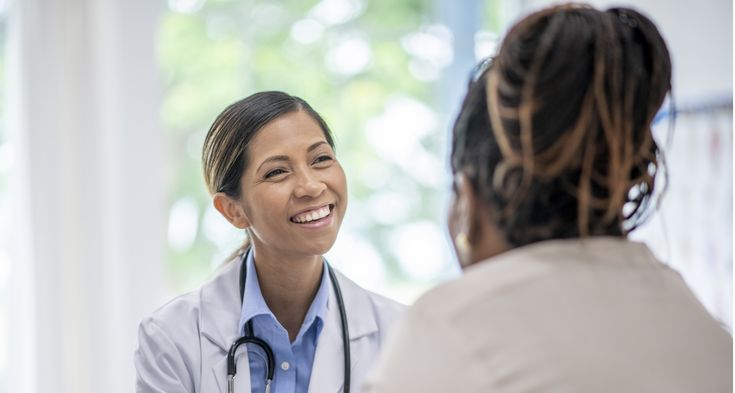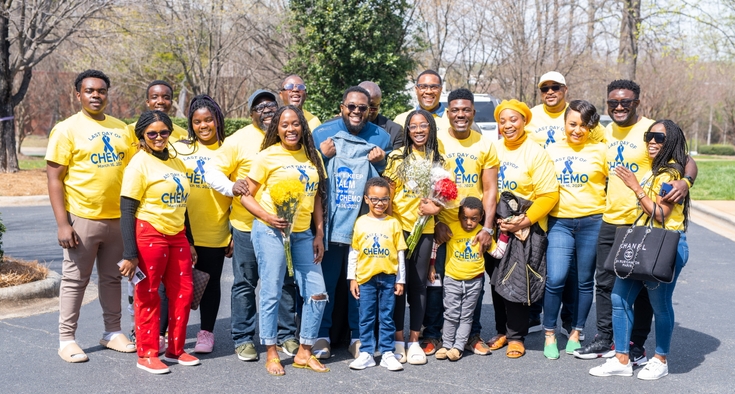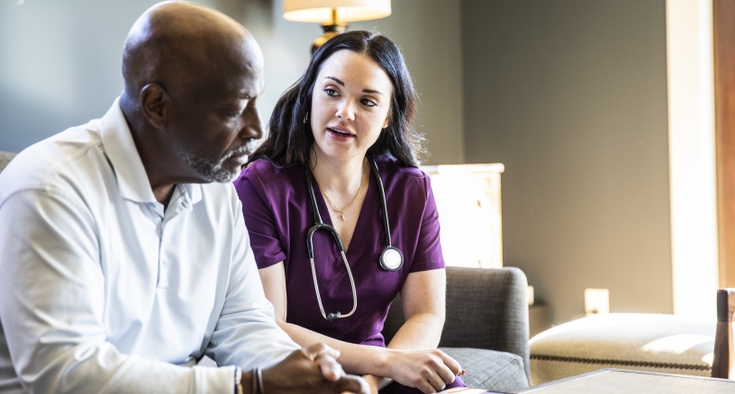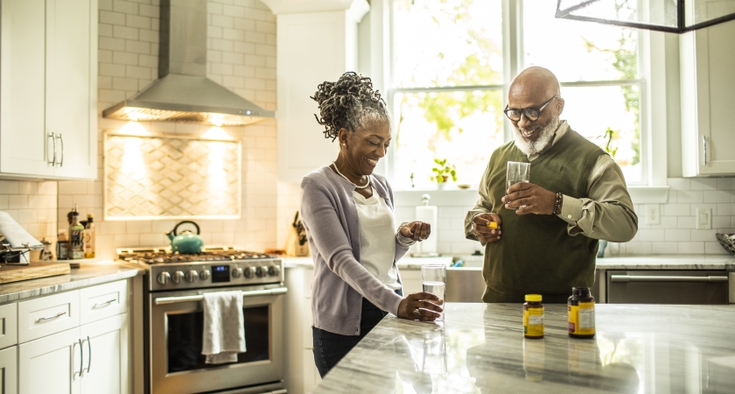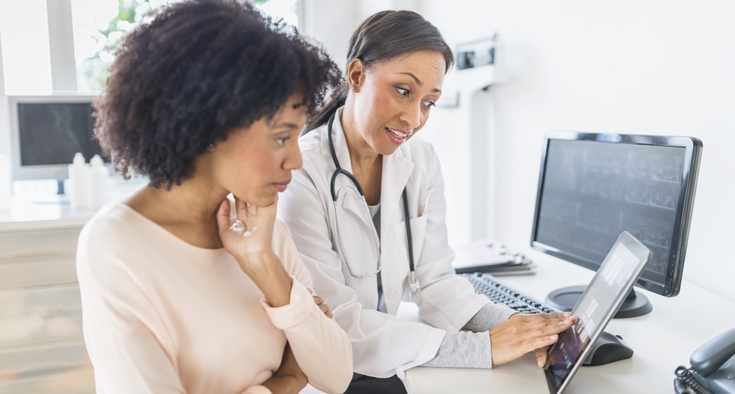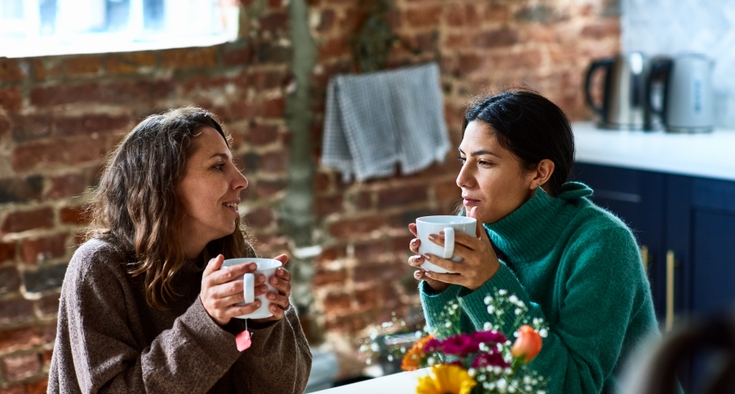Few of us look forward to a colonoscopy – the prep, in particular. And no, it’s not exactly fun. However, it's not nearly as bad as many have come to believe. And it’s a small price to pay for potentially preventing cancer or catching it early. Plus: most people only need one every 10 years.
It’s important to follow medical experts’ advice. For most people, that means getting your first colonoscopy at age 45. The procedure involves altering your diet a few days beforehand and drinking plenty of liquids the day prior.
Colon cancer among younger people is increasing. Cases have been rising by about 2% each year in people younger than 50. Actor Chadwick Boseman died of colon cancer in 2020 at just 43.
African Americans are about 20% more likely to get colon cancer and about 40% more likely to die from it than most other groups. Colon cancer is the second-leading cause of cancer deaths in the United States for men and women combined, killing more than 50,000 people each year.
Screening, in the form of a colonoscopy, is our best defense. It's important to identify polyps and pre-cancerous lesions before they have a chance to turn into cancer.
See a primary care physician about scheduling a colonoscopy screening
So, what exactly is a colonoscopy?
A colonoscopy is an exam used to detect changes or abnormalities in the large intestine (also called the colon) and rectum. While you’re sedated, a long, flexible tube is inserted into the rectum. A tiny video camera at the tip of the tube allows the doctor to view inside the colon. Your doctor is looking for abnormalities including polyps – small growths that could turn into cancer.

“For most patients, that first colonoscopy is a fear of both the unknown and a fear of `Oh my gosh, what if they find something?’" said Novant Health colorectal surgeon Dr. Michael Dobson. It’s a lot easier to bury your head in the sand and pretend nothing’s there. I think those two things create a lot of anxiety for patients."
Dobson said he always strongly encourages patients to get screening colonoscopies because it's important to identify polyps and pre-cancerous lesions at an early stage.
The preparation
Colonoscopy prep used to include drinking up to a gallon of liquid – a mixture of a laxative and clear fluids – to free the colon of solid matter. That’s still the goal, but the prep is much improved.
“I did those preps myself, such as GoLytely, and it’s miserable; it’s torture,” Dobson said. “The thought of having to drink a gallon of seawater, willingly, is not something people want to sign up for.
“A lot of the preps we use now are smaller volume and more tolerable. I use SuPrep, which is 6 ounces of prep mixed with 6 ounces of liquid, and followed by a lot of clear liquids. Then you repeat the prep one more time.”
Key steps you must follow:
- Do not eat solid food the day before your procedure.
- Follow the instructions exactly.
- If you’re using GoLytely, drink it really cold and through a straw, so the taste is more tolerable.
- Drink lots of clear liquids between the prep stages; that optimizes the prep.
- Drink the liquid until it’s gone – even if your stool is already liquid.
One of the newer preps – SUTAB – comes in pill form. But it’s not a single pill; it’s a dozen taken in a series, not all at once. “It’s easy to do, and there’s no bad taste to endure,” Dobson said. “But it’s obviously not an option for people who struggle to swallow pills.”
Patients who want a particular prep kit can ask their doctor for it since they’re all basically the same and basically safe, Dobson said. But, because concentrated preps put stress on the kidneys, anyone with kidney issues needs to be cautious. GoLytely is the prep approved for use by people with impaired kidney function.
It’s worth noting that your doctor’s office will try to schedule your colonoscopy in the morning – which means you’ll need to set an alarm for the wee hours to finish drinking the prep liquid.
Top scores for safety in NC
Novant Health received the most ‘As’ for patient safety in North Carolina from The Leapfrog Group. That includes Rowan Medical Center. With a focus on safety, quality and patient experience, the national, industry-leading nonprofit, evaluates and assigns letter grades ranging from A to F to hospitals across the country. Novant Health’s hospitals with “A” grades outperform 70% of hospitals nationwide for safety and quality.
What you can – and can’t – eat and drink
No solid food is allowed 24 hours before your colonoscopy. Anything you can see through and has no pulp is OK to drink, including:
- Jell-O, Gatorade and Popsicles, but none that are red, purple or orange. (That can look like blood during your colonoscopy.)
- Apple or white grape juice.
- Broth (clear, with no seasoning or chunks of anything).
- Coffee or tea (without milk or creamer).
- Clear carbonated beverages such as ginger ale or lemon-lime soda.
Don’t drink alcohol the day before or the day of the procedure.
“It’s important for patients to understand the instructions they receive are specific for a reason,” Dobson said. “When we do a colonoscopy, we need that colon squeaky clean.
“It is vital that for five to seven days before you begin the prep, you cut out high-roughage foods, leafy greens, seeds, nuts, things like that. Those things take a while to exit the colon and don’t get washed out with the prep. If a patient eats a sandwich the day before a colonoscopy, I can see the lettuce and tomato from their sandwich because it’s still in their large intestine.”
An unclean colon doesn’t allow a clear view, which means you’ll have to schedule another colonoscopy soon after the failed attempt. And insurance may not cover the repeat.
The procedure
The good news? The preparation is harder than the procedure itself.
The sedation allows patients to fall asleep quickly and wake up immediately. They don’t remember anything about the procedure, and they’re not groggy for an extended time.
A routine procedure takes about 20 to 30 minutes. Patients usually spend another 30 minutes or so in the recovery room as the sedative wears off.
You’ll need someone to drive you home. In fact, your designated driver will need to bring you to the appointment and remain in the waiting room during the procedure. So, Uber and Lyft are not options.
If a colonoscopy is normal and there are no additional risk factors, a patient can likely wait 10 years before their next one.
Dobson’s best advice regarding colonoscopies? Just do it.
“So many people put it off,” he said. “Follow instructions. And advocate for your family and friends to get it done. Colon and rectal cancer can be identified, before it’s too late, through colonoscopies. There’s a simple procedure we can do to remove polyps so they never get the chance to turn into cancer.”





